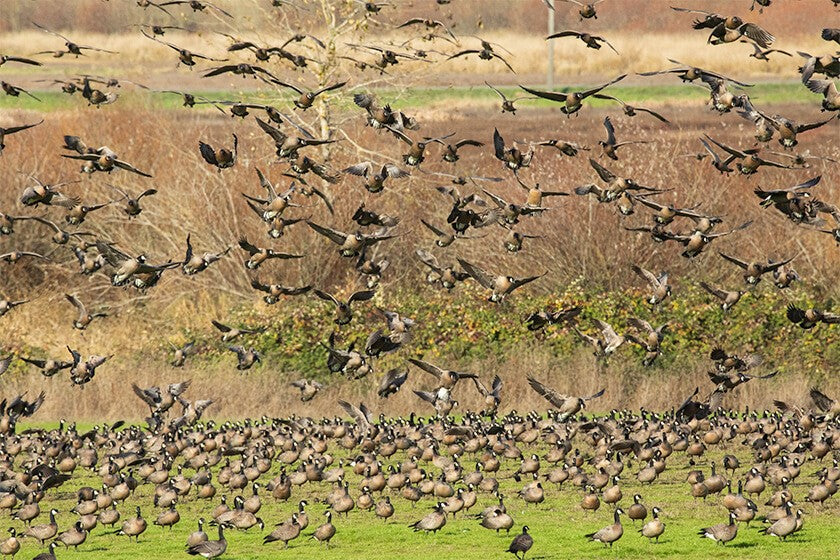
HUNTING CACKLERS
HUNTING CACKLERS by Scott Haugen
The addiction of hunting cacklers continues to escalate throughout the flyways they inhabit but getting on these large flocks of small geese isn’t as simple as it may seem. Convincing a flock of 5,000-plus geese to land in your decoys can be the biggest challenge, for if you fail to setup on the X — the spot they’ve been feeding on — all your efforts may be thwarted.
Take the scenario in the accompanying video above. On this morning dense fog and a continual shift in wind direction dictated our decoy arrangement. On mornings when the wind direction is steady, try situating the decoys in one mass flock, heads primarily facing into the wind, to simulate the grazing pattern they exhibit. With a few landing pockets on the fringe near your blind, birds will often want to land there.
Large flocks of cacklers can mow down a grass field in a short time, and they do it by feeding as they walk, or flying from spot to spot. If they find a spot they like, they might feed there for hours. If they consume the grass in one spot, they might lift off and fly 100 yards and start grazing in a different spot of the same field. Often, what cacklers do, and when they do it, makes little sense.
But let’s back up. The most important part of any cackler hunt is the scouting. You might spend days, even weeks, patterning flocks. In valleys laden with green, lush grass, geese can have hundreds of square miles to dine on. The key is finding where they fly to from their night’s roost, and start feeding, then keep feeding on.
Many dedicated cackler hunters in the Pacific Northwest, where I hunt the most, won’t think about setting decoys in a field until the geese have been hitting the same exact spot, at the same precise time for two, sometimes three, days. And the numbers have to be there, too. For many hunters the magic number is 5,000 geese; for others it can be twice that. In other words, not until they see 5,000-10,000 geese landing in the same spot for two to three days will they even think about setting out a large spread of decoys.

Then there’s the blind. Because cacklers typically feed in the middle of green, short-grass fields, hiding from them can be a major challenge. Don’t think because flocks are comprised of thousands of birds that they’re stupid — they’re far from it — especially as the season rolls along.
As large flocks of geese consume the middle of a field, they’ll often start grazing toward the edges. That’s when you want to get serious. Find tall, yellow grass or other cover to put your layout blinds in. Be sure to brush in your layout or A-frame blind to precisely match the cover, or birds won’t commit.
When a flock of 5,000 cacklers takes flight, they’re loud, and no calling can compete with that. But often times small flocks break away from larger groups, even singles and doubles can trickle by, and calling can be highly effective. The best results I’ve seen have come from using calls specifically designed for cacklers, versus trying to make a snow goose or whitefront call do the job.
If you want to hunt cacklers there are no shortcuts. Scouting demands time, a spread of decoys isn’t cheap, and blind preparation is never ending. But done right, when you hit the X, there’s nothing like the thrill of having a flock of 10,000 screaming geese drop right into your lap.